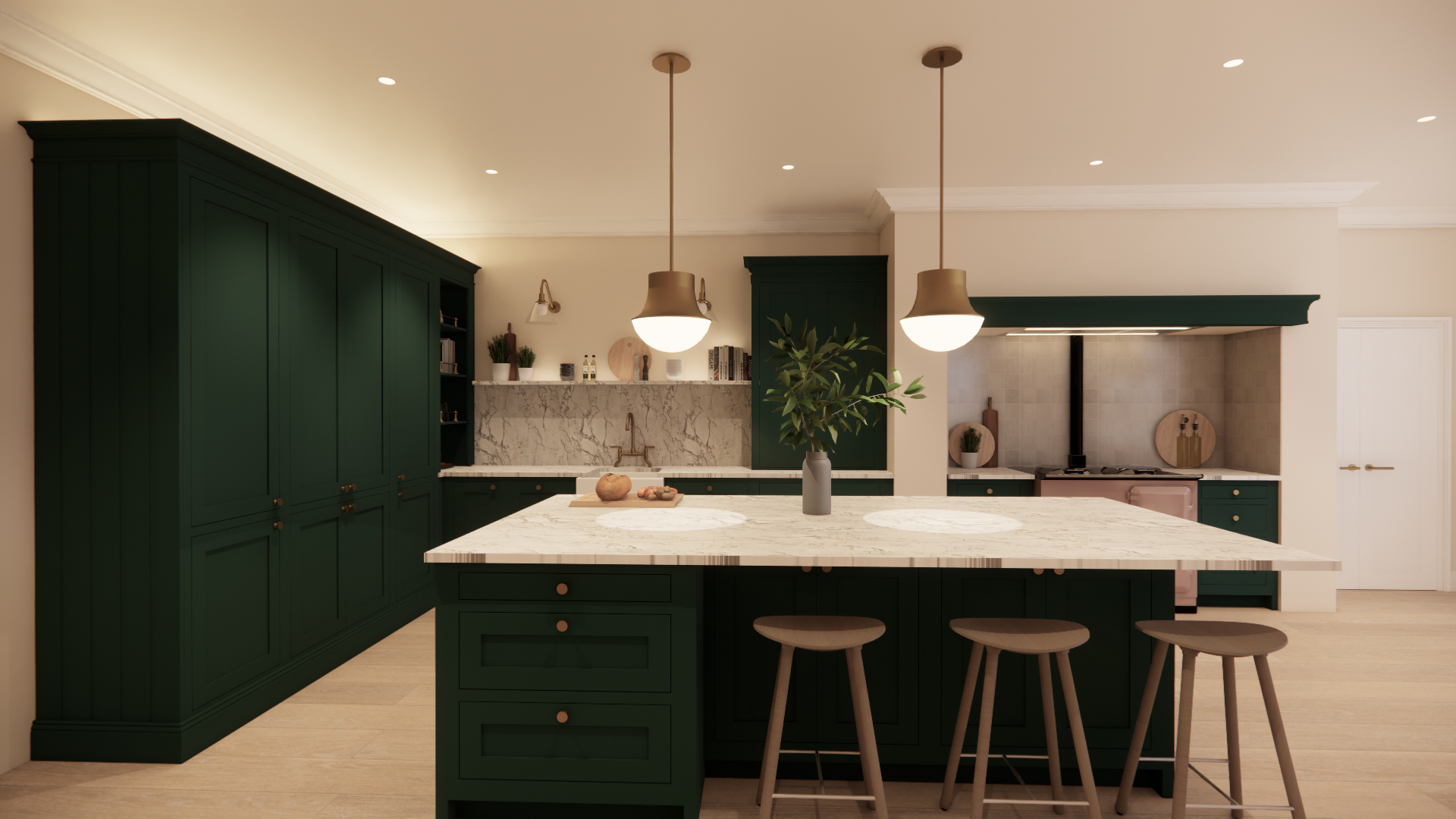Choosing a specialization is a career-defining decision. While some designers find their niche early on, others explore different sectors before discovering where their true passion lies. After eight years of crafting workspaces, educational facilities, and even a crematorium, UK-based interior designer Naomi Wheeler made the decision to switch to residential projects. This article details the challenges of changing specializations, the unexpected differences, and the value of embracing the learning curve.
Hodge House Project by Naomi Wheeler
Falling into Commercial Design
Naomi’s career in commercial interiors started almost by chance. During her university years, she participated in a “Sandwich year”, an industry placement that allowed her to gain real-world experience. What was meant to be a temporary position at a design practice turned into a six-year career. Working in commercial design offered a broad spectrum of projects, from high-end residential developments and educational facilities to build-to-rent properties. The variety was thrilling, but what stood out most was the client relationships. “The best part about being a designer is when you build trust with a client. After a few projects, they kind of just leave you to do your thing because they know they’ll be happy with the result,” she reflects.
Bridle Works Glasgow Project by Naomi Wheeler
The Turning Point
Despite the satisfaction of her commercial projects, a lingering curiosity about residential design never quite disappeared. The longer she stayed in commercial design, the harder it felt to switch. “The more senior you become, the harder it is to change,” she explains. “All the skills between the two are transferable, but there’s still a lot to learn.” When a former colleague approached her with an opportunity to join a residential-focused team, she took the leap. “I’m very much a student now, every day is a school day,” she laughs. The new role came with its own set of challenges, but also a supportive environment and a chance to explore high-end materials she had never worked with before.
Adapting to a Faster Pace
One of the biggest surprises in her new residential role was the speed of project turnaround. In commercial design, timelines stretched for years, allowing for deep dives into narratives and concepts. Residential projects, however, moved at a lightning pace, sometimes wrapping up in just eight weeks. “With residential design, clients want to see furniture straight away,” she says. “In commercial design, you spend so much time developing the core finishes like walls, floors, and ceilings. Residential design is a much quicker process, and the first thing you show is much more refined.” This faster pace meant learning to make decisions quickly and embracing a different kind of storytelling, one that resonated with homeowners rather than corporations.
New Materials, New Mindset
Switching to residential design also meant a shift in material choices. In commercial projects, durability is king. Vinyl flooring and stain-resistant surfaces were often the go-to options. But in residential design, the focus shifted to luxury and aesthetics, with clients willing to invest in marble worktops and natural timber floors. “The types of products I’m specifying now are completely different,” she explains. “In commercial design, I never specified a marble worktop because it’s such a porous material and not practical for frequent-use surfaces.” This freedom to use premium materials has reignited her passion for design, allowing her to create spaces that feel both personal and high-end.
 Residential Design Project by Naomi Wheeler
Residential Design Project by Naomi Wheeler
The Heart of Residential Design
For all the excitement of new materials and faster timelines, the most rewarding part of residential design has been the personal connections. Handing over a finished project to a delighted homeowner offers a level of satisfaction that’s hard to match. “That’s why we get into this business,” she says. “To design things that change people’s lives for the better.” Building trust with residential clients requires a different approach, one that’s often more hands-on and emotionally invested. While commercial projects can feel distant due to their scale and timeline, residential design brings the focus back to individual people and how they live.
Embracing Change in Design
The journey from boardrooms to living rooms has not been without its challenges, but it has also been an opportunity to grow as a designer. While commercial projects allowed for deeper storytelling and concept-driven design, the shift to residential work has been about embracing faster decisions and building more personal connections. Learning to balance creativity with practicality has opened new doors and brought a fresh perspective to her design approach.
For those considering a similar transition, her advice is simple: Stay open to learning. “You’ll never know everything in this industry. Things are always changing, from planning regulations to building standards, so you have to be open to it all.”
 Swatchbox is a premier sample fulfillment service for building product manufacturers. With proprietary software designed by insiders of the design community, Swatchbox helps manufacturers improve product sales and brand affinity by delivering material samples to the design community with speed, intelligence, and style. Learn more and join Swatchbox at www.swatchbox.com.
Swatchbox is a premier sample fulfillment service for building product manufacturers. With proprietary software designed by insiders of the design community, Swatchbox helps manufacturers improve product sales and brand affinity by delivering material samples to the design community with speed, intelligence, and style. Learn more and join Swatchbox at www.swatchbox.com.














